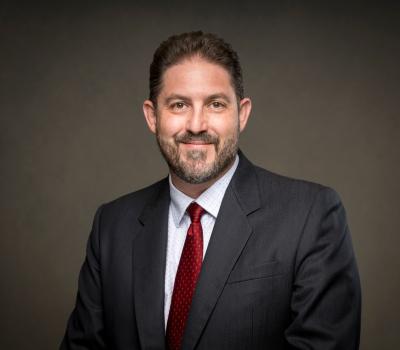A group of College of Engineering researchers has been awarded the J. James R. Croes Medal by the American Society of Civil Engineers.
The Croes Medal is awarded to the authors of one of the top two papers among the approximately 7,000 papers published in 35 ASCE technical journals and numerous conference proceedings every year. The awardees’ paper, titled, "Probabilistic Structural System Response to Differential Settlement Resulting from Spatially Variable Soil," was published in the February 2022 issue of the Journal of Geotechnical and Geoenvironmental Engineering.
The role of spatially variable soil stiffness and strength on structural performance is increasingly recognized with the development of geotechnical reliability-based design tools. Performance criteria that link foundation soils and potential structural damage have shed light on the effect of soil spatial variability on structural performance.
However, the role of soil-structure interaction (SSI), especially considering nonlinearity in soil and structural elements, to redistribute shear and flexure within structures that result from differential foundation movements has been under-investigated.
“Neglecting to evaluate the system response of our civil infrastructure considering interactions between geotechnical and structural models could result in dramatic inefficiencies (i.e., over- conservatism) or prevent identification of key failure mechanisms,” said lead author Armin Stuedlein, professor of geotechnical engineering.
Stuedlein and colleagues examined the effect of nonlinear SSI on the redistribution of flexural demands within a steel structure founded in soils exhibiting spatial variability and differential settlements through a comparison of uncoupled and coupled Monte Carlo simulations.
The study revealed that the effect of SSI is to substantially reduce the probability of exceeding selected limit state criteria due to differential movements that vary in magnitude with the level of stringency of the limit state criteria. The effect of SSI becomes more apparent and beneficial as the severity of differential movement increases.
“Our results indicate that the proposed framework can serve as the basis for developing performance-based limit state criteria that account for structure type and materials, and will help advance building codes and repair guidelines,” Stuedlein said.
In addition to Stuedlein, the paper’s authors include Jonathan C. Huffman, former civil engineering doctoral student at Oregon State and now an associate geotechnical engineer at Geotechnical Resources, Inc.; Andre Barbosa, professor of structural engineering; and Andre F. V. Belejo, former structural engineering doctoral student at Oregon State and now a design engineer at Seft Consulting Group.
The Croes Medal was established by ASCE on October 1, 1912, and is named in honor of the first recipient of the Norman Medal, John James Robertson Croes, Past President, ASCE.





